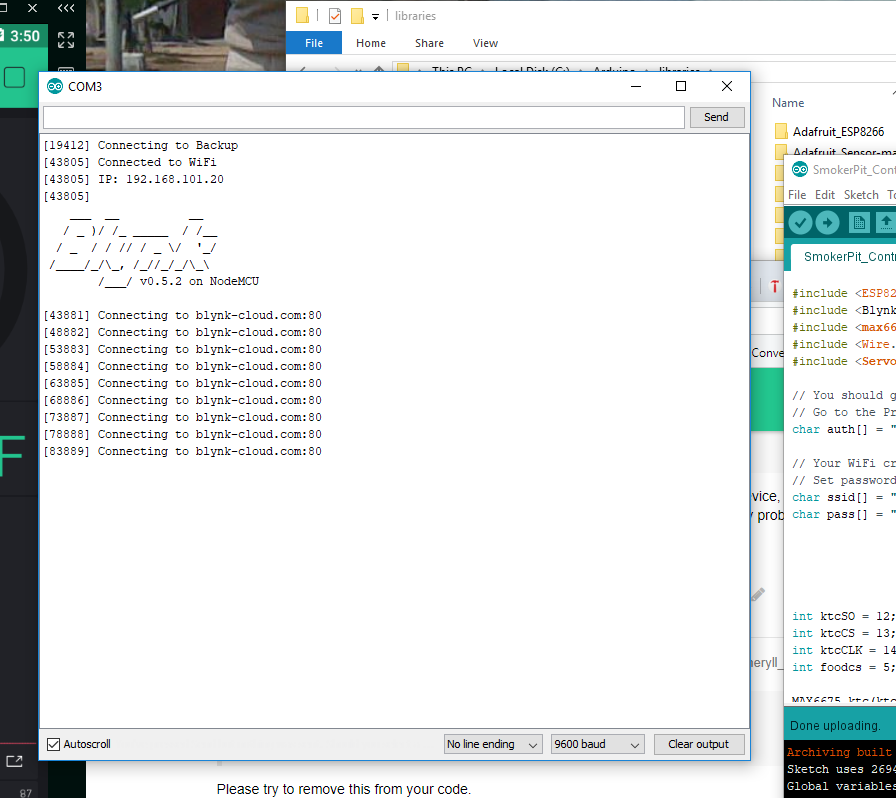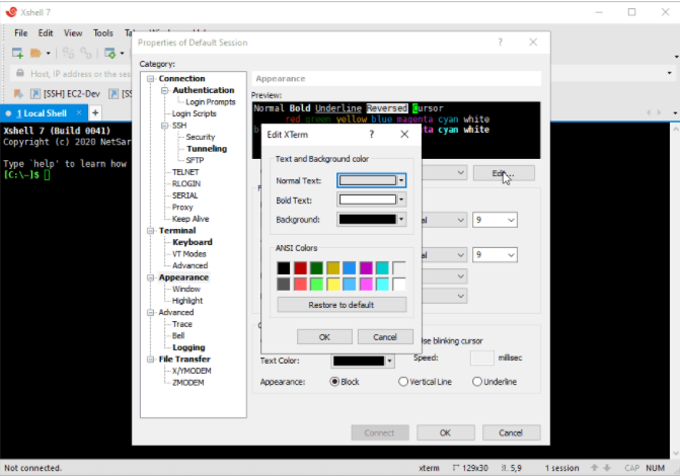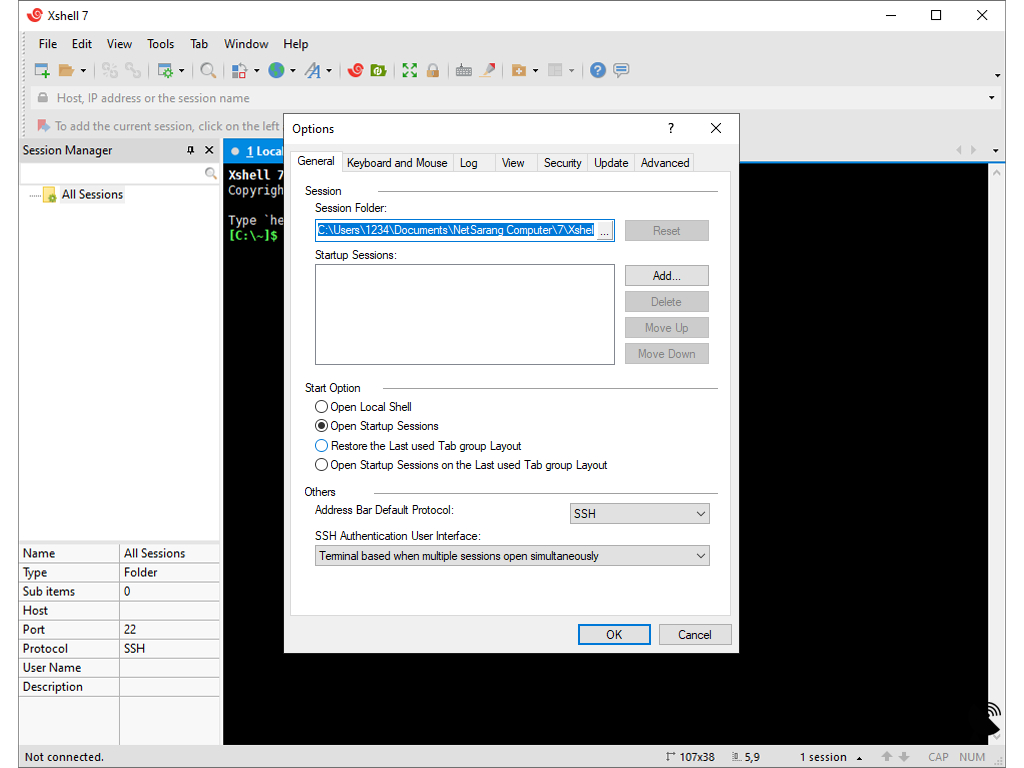Picture this for a moment: you have a collection of smart devices, perhaps in your home or spread across different work sites, and you need to keep an eye on them or make adjustments. Getting to each one physically can be a real hassle, or perhaps even impossible, you know? What if there was a simple, very secure way to peek in and take charge from wherever you happen to be? It's almost like having a special pass that lets you manage everything from a distance, keeping things running smoothly without having to be right there.
This idea of reaching out to your Internet-connected gadgets from afar is becoming more and more important these days, particularly as more of these items show up everywhere. Being able to check on them, fix little issues, send out software updates, or even pull important information back to you, well, that's pretty much vital for keeping things working well and staying safe. It helps cut down on times when things aren't working, which is a good thing for sure.
That's exactly where a method called SSH, or Secure Shell, steps in. It offers a truly solid path to connect with your IoT items, giving you the ability to manage them as if you were sitting right next to them. This approach is very much like holding the master key to your connected setup, allowing you to oversee operations, solve problems, and keep everything secure. We're going to talk about how you can set this up and why it makes such a difference for anyone dealing with smart devices.
Table of Contents
- What is SSH Control IoT Device and Why Does It Matter?
- How Does SSH Control IoT Device Work for Remote Access?
- Getting Started with SSH Control IoT Device
- SSH Control IoT Device on Android
- SSH Control IoT Device on Ubuntu
- Overcoming Connection Challenges for SSH Control IoT Device
- What Are the Benefits of SSH Control IoT Device?
- Looking Beyond Basic SSH Control IoT Device
What is SSH Control IoT Device and Why Does It Matter?
So, what exactly is this "SSH control IoT device" idea all about? Think of it this way: SSH, which stands for Secure Shell, is a method that lets you connect to a computer or a gadget over a network in a way that keeps everything private. When we talk about using it with IoT devices, we're talking about reaching out to those little smart things – like sensors, cameras, or home automation hubs – from somewhere else. It's a way to send commands, get information, or even fix things without having to physically go to where the device is located. For instance, you might have a smart thermostat at home, and you want to check its settings while you're at work. SSH gives you a secure path to do just that, almost like you're sitting in front of it.
Why does this kind of remote access to IoT devices really matter these days? Well, as more and more smart gadgets are being used, whether it's in our homes, in businesses, or out in big industrial setups, keeping tabs on them all can get pretty tricky. You need a way to manage them from one spot, fix issues quickly when they pop up, send out new software to keep them up-to-date, and make sure any information they gather is brought back safely. These things are pretty important for making sure everything runs smoothly, stays safe from unwelcome visitors, and avoids long periods where things just aren't working. It's about being efficient and secure, you know?
The growth of these connected items means that having a reliable way to oversee them is more than just a nice extra; it's becoming a real necessity. Without a good system for remote management, keeping track of many devices can become a bit of a headache, leading to slower fixes and possibly more security worries. SSH offers a straightforward and dependable solution for this, which is why it's such a valuable tool for anyone involved with smart technology. It truly helps make the whole experience of managing these devices a lot simpler and more secure, which is something we all want, right?
- Sayles Co Obsession
- Sara Jay Biography
- Sara Retali
- Sarah Gallons
- Securely Connect Remoteiot Vpc Raspberry Pi Free
How Does SSH Control IoT Device Work for Remote Access?
So, you might be wondering, how does SSH actually manage to give you this control over an IoT device from afar? At its heart, SSH creates a protected pathway between your personal computer or phone and the IoT gadget you want to connect with. Think of it as a secret tunnel that no one else can peek into. When you send a command, say, to check the status of a smart light, that command travels through this secure tunnel. The device then sends its response back through the same protected route. This means any information exchanged – whether it's your commands or the device's data – is kept private and safe from prying eyes. It’s pretty clever, actually.
This secure connection is what makes SSH so useful for managing IoT devices. You can literally type commands into your computer, and those commands will be carried out by the remote device. For example, you could tell an IoT sensor to start collecting data, or perhaps you might want to restart a smart camera that isn't behaving properly. It's like having a direct line to the device's brain, allowing you to access its functions and change its settings. This gives you a lot of freedom to troubleshoot problems without needing to be physically present, which, in some respects, is a huge time-saver.
Beyond just sending commands, SSH also lets you move files back and forth. This is really handy if you need to update the software on an IoT device or if you want to pull data logs from it. You can securely copy a new software version to the device or download important information for analysis. This capability gives you full oversight and makes it much easier to keep your devices updated and in good working order. It's a very complete solution for remote oversight, letting you keep everything running smoothly from a distance.
Getting Started with SSH Control IoT Device
Setting up SSH to control your IoT devices isn't as tricky as it might sound, honestly. The first step usually involves getting your IoT device ready to accept these secure connections. This often means going into its settings, perhaps through a web interface or a local connection, and turning on the SSH service. You'll typically set up a username and a strong password, or even better, use something called SSH keys for an even more secure way to connect. SSH keys are like a digital handshake that proves you are who you say you are, without needing to type in a password every time.
Once your IoT device is ready, you'll use an SSH client on your own computer or phone to make the connection. This client is just a piece of software that knows how to talk the SSH language. You tell it the address of your IoT device, provide your login details, and if everything is set up correctly, you'll be connected. From there, you'll see a command line interface, which is basically a text-based window where you can type in commands. It's a pretty direct way to interact with the device.
This initial setup might seem a little bit technical, but there are lots of straightforward guides available that walk you through each step. The goal is to create that secure link so you can start sending instructions and getting information from your devices, no matter where you are. It’s a foundational step that opens up a whole world of remote management possibilities for your smart items.
SSH Control IoT Device on Android
Did you know you can actually manage your IoT devices right from your Android phone or tablet using SSH? It’s a pretty neat trick that gives you a lot of flexibility. The basic idea is to set up your IoT device to allow SSH connections, just like we talked about earlier. Then, you use a special application on your Android device that acts as an SSH client. There are several good apps available that let you do this, some of which even support using SSH keys without any extra cost, which is pretty convenient.
The process involves a few steps. First, make sure your IoT device is configured to listen for SSH connections. This might mean adjusting its network settings or enabling a specific service. Next, you'll download an SSH client app onto your Android device. Once the app is installed, you'll enter the network address of your IoT device, along with your login credentials or the path to your SSH key. After a successful connection, you'll have a command prompt right on your phone screen, ready for you to send commands to your remote device. It’s honestly quite empowering to have that level of control in your pocket.
Having this capability means you can check on your home automation system while you're out, or perhaps quickly troubleshoot an industrial sensor from a different part of the building. It brings a lot of ease to overseeing your connected gadgets, offering a secure and simple way to keep everything running smoothly, even when you're on the go. This is a very useful skill for anyone with smart devices, giving you a great deal of practical command.
SSH Control IoT Device on Ubuntu
For those who prefer using a Linux system like Ubuntu, managing IoT devices with SSH is a very natural fit. Ubuntu comes with SSH client tools built right in, making the setup process quite straightforward. Just like with Android, the first step is to ensure your IoT device is set up to accept SSH connections. This often involves enabling the SSH server on the IoT device itself.
Once your IoT device is ready, you'll open a terminal window on your Ubuntu computer. From there, you can simply type an SSH command, specifying the username and the network address of your IoT device. For example, it might look something like "ssh username@device_ip_address". After entering your password or using your SSH key, you'll be connected. This gives you a powerful command-line interface to interact with your remote IoT device. You can then run commands, transfer files, and check on how the device is performing, all from the comfort of your Ubuntu machine.
Using SSH on Ubuntu for IoT control offers both a high level of security and a lot of practical convenience. Because SSH encrypts all the communication, you can be confident that your commands and any data coming back from the device are protected from unauthorized viewing. This setup allows you to manage your IoT devices with a good measure of confidence, knowing your connections are secure and your data is private. It's a pretty robust way to handle things, in a way.
Overcoming Connection Challenges for SSH Control IoT Device
Sometimes, when you're trying to connect to an IoT device from afar using SSH, you might run into a few hurdles, especially if your device is sitting behind a router or a firewall. These network setups are designed to keep things safe by blocking incoming connections from the wider internet, which is good for security, but it can make remote access a little tricky. It's almost like your device is in a protected house, and the router is the locked front door.
One common challenge is something called NAT, or Network Address Translation, which is what most home routers use. It lets many devices on your home network share one internet connection, but it also makes it hard for outside connections to find a specific device inside. Firewalls, on the other hand, are like security guards that inspect all traffic and block anything suspicious or not explicitly allowed. These features, while helpful for keeping your network safe, can prevent direct SSH connections from the internet to your IoT device.
However, there are smart ways to get around these obstacles. Some solutions involve setting up "port forwarding" on your router, which basically tells the router to direct specific incoming connections to a particular device on your network. Another approach, which is often more scalable and secure, involves using specialized platforms. For instance, the SocketXP IoT platform, as mentioned in "My text", provides a way to get remote SSH access to IoT devices that are behind NAT routers or firewalls. It does this by creating secure SSL/TLS VPN tunnels, which are like private, encrypted pathways that bypass these network restrictions. This kind of service simplifies the process greatly, allowing you to connect without having to mess with complex router settings, which is a big relief for many.
What Are the Benefits of SSH Control IoT Device?
So, why go through the effort of setting up SSH for your IoT devices? The benefits are pretty significant, actually. First and foremost, there's the security aspect. SSH provides a protected way to communicate between your machine and your remote IoT devices. This means that any information you send, like commands or passwords, and any data you receive, is scrambled so that unauthorized individuals can't read it. This keeps your data safe and helps maintain your privacy, which is something we all care about. It's a really strong shield against digital snooping.
Then there's the incredible convenience. Imagine being able to check on your devices, fix problems, or even update their software from anywhere with an internet connection. You don't need to be physically present, which saves a lot of time and effort. For businesses with many IoT deployments, this means quicker troubleshooting, faster updates, and less downtime, all of which contribute to greater efficiency. It’s like having a universal remote for all your smart gadgets, no matter how far away they are.
This level of remote oversight also gives you complete command over your devices. You can run specific commands, transfer files, and keep an eye on how well your devices are working without having to worry about someone else getting in or your information being exposed. It's a powerful tool that offers both peace of mind and practical advantages, making the management of your connected world much simpler and more dependable.
Looking Beyond Basic SSH Control IoT Device
While SSH is a really solid method for gaining control over individual IoT devices, it's worth considering that as your collection of smart items grows, you might start looking for even more streamlined ways to manage them. For smaller setups or for personal use, SSH is often perfectly adequate and very effective. However, for larger businesses or extensive IoT deployments, managing each device individually through SSH can become a bit time-consuming, you know?
Some organizations, especially small to medium-sized businesses, find that while SSH is a great start, they eventually need more comprehensive platforms that offer centralized control and easier scalability. These platforms often build upon the security of SSH but add features like device grouping, automated updates, and more detailed monitoring dashboards. They can make it much simpler to oversee hundreds or even thousands of devices without needing to connect to each one separately. It's about moving from a one-on-one approach to a more unified management system.
So, while learning how to use SSH for your IoT devices is an excellent skill to have and provides a secure foundation, it's also good to be aware that there are more advanced solutions out there for when your needs expand. These alternatives are designed to help IT administrators manage vast numbers of devices more efficiently, offering smarter and more flexible options for the future. It's always a good idea to think about what your needs might be down the road.
In essence, having the ability to manage your IoT devices from afar using SSH is a truly valuable skill. It offers a secure and effective way to keep an eye on your smart gadgets, fix problems, and maintain them, whether you're using an Android phone, an Ubuntu computer, or dealing with network challenges. This kind of remote access brings a lot of ease and confidence to managing your connected world, allowing you to take charge of your devices from wherever you happen to be.
Related Resources:



Detail Author:
- Name : Meredith Haley DVM
- Username : bashirian.johnathon
- Email : hermann.tracy@cummerata.info
- Birthdate : 1984-01-06
- Address : 596 Mills Gardens Phoebeside, MD 68614-7407
- Phone : 279.368.8733
- Company : Hudson, Waelchi and Rolfson
- Job : Health Practitioner
- Bio : Provident quibusdam corrupti et quis laudantium necessitatibus voluptatem. Omnis vero quibusdam rerum reprehenderit ipsum est ut. Et aliquam laborum tempora iste enim animi quod.
Socials
instagram:
- url : https://instagram.com/alexandro8986
- username : alexandro8986
- bio : Similique id aliquid minima. Atque ut enim atque. Iusto autem saepe qui sapiente esse.
- followers : 3441
- following : 1565
twitter:
- url : https://twitter.com/alexandro_id
- username : alexandro_id
- bio : Voluptatibus tempore fuga praesentium explicabo autem. Tempora impedit illo et consectetur eaque quia.
- followers : 1533
- following : 1089
linkedin:
- url : https://linkedin.com/in/alexandro6288
- username : alexandro6288
- bio : Quas earum quos excepturi veritatis qui et fuga.
- followers : 4485
- following : 1924
facebook:
- url : https://facebook.com/satterfielda
- username : satterfielda
- bio : Rerum perferendis velit consequatur eum.
- followers : 2128
- following : 1481
tiktok:
- url : https://tiktok.com/@satterfielda
- username : satterfielda
- bio : Voluptas consequatur doloribus eos quibusdam autem.
- followers : 2804
- following : 314